Learn how to build a raised garden bed for less than $22 per box. With just a few materials and a little bit of time, you can put together these cheap raised garden beds.
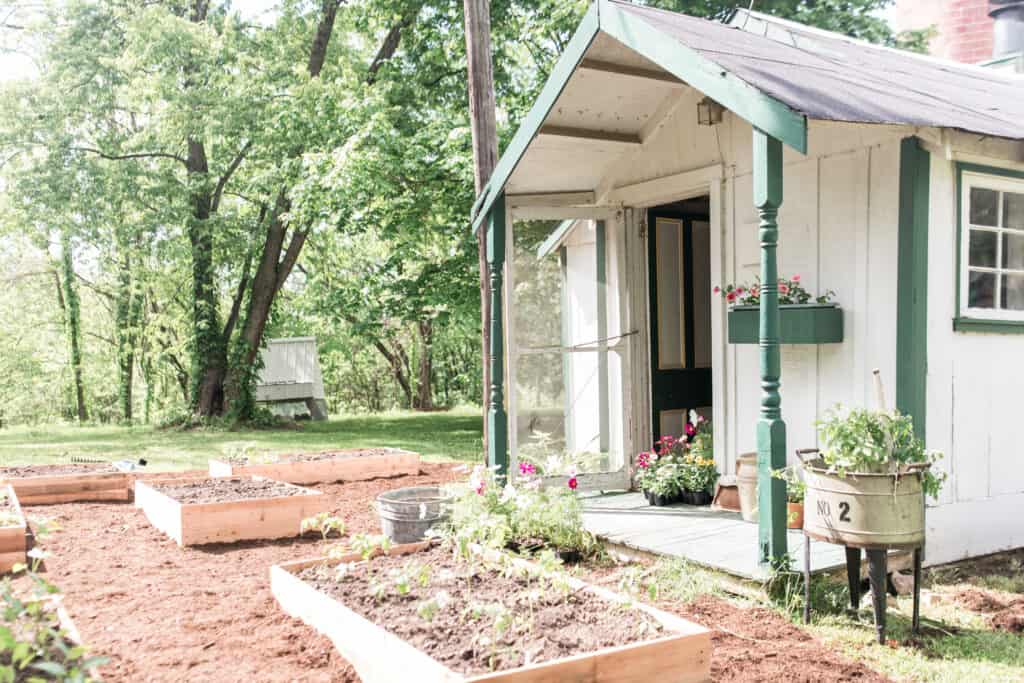
Table of Contents
- Cheap Raised Garden Bed
- Benefits of a Raised Garden Bed
- What kind of wood should be used for raised beds?
- What can you plant in raised garden beds?
- How deep should a raised garden bed be?
- Materials Needed to Build Raised Garden Beds:
- How To Build A Raised Garden Bed Tutorial
- Other Homestead Projects Around The Farmhouse
- How To Build A Raised Garden Bed For Cheap Recipe
- Benefits Of Raised Beds
Today I’m going to show you how to build cedar raised beds. If you have been following along in our gardening journey so far, you may have seen our vlog all about our cottage garden and have gotten a sneak peek at the cedar raised beds we built.
These raised beds were so easy. In one day, we were able to get the beds together and get them filled and planted. And we did six of them! I was surprised by how easy the process was.
When we moved to the farm in January, we knew the garden would be a project we would tackle in year one. We love being able to grow a lot of our own food, and we’re excited to continue to expand it each year.
There is something so satisfying about learning, growing, and enjoying the food you produce on your own land, knowing what went into the soil, the kinds of seeds, and all the hard work.
But that hard work is so worth it when you get to bite down on a crunchy sweet pepper or into a home-grown, juicy tomato. Truly, there is nothing like it.
I love how much the kids get out of it, too. You can often find them in the garden chomping away at the vegetables.
This post is being updated in 2024. Now, while prices have risen a bit, you can still totally make a raised bed garden for cheap. Back when I originally built these, pickets were only $2 apiece.
Today you’ll find similar ones at Home Depot for $3.15. So each bed will cost about $22. That’s still fairly inexpensive.
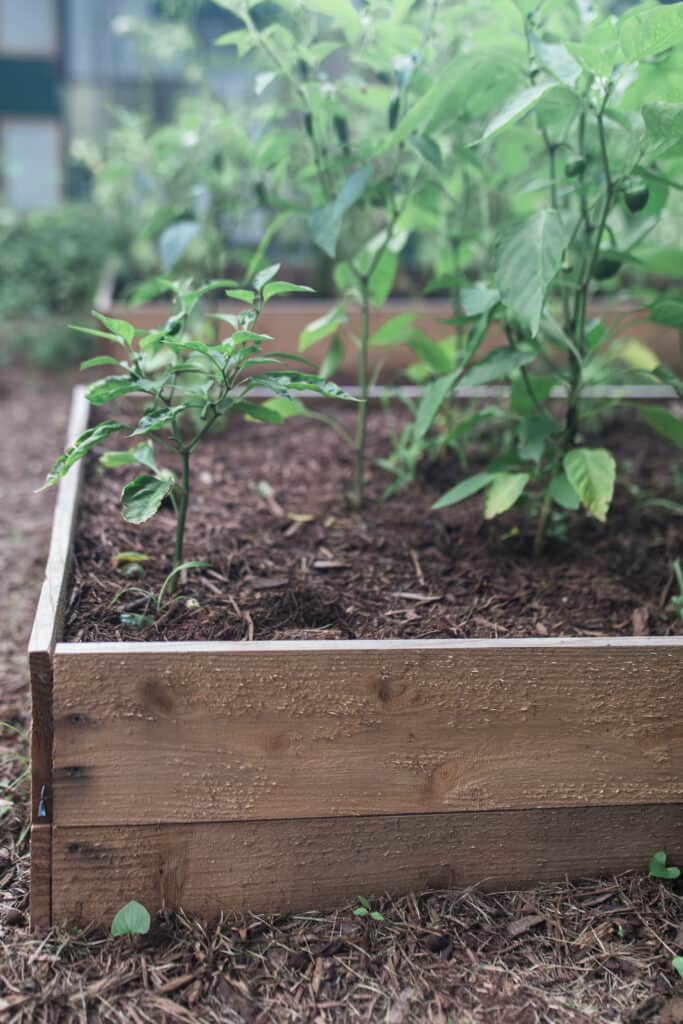
Cheap Raised Garden Bed
You’ll need six cedar fence posts for one raised bed. The reason we went with cedar fence posts is that it was the only affordable cedar that our local lumber yard had on hand. Plus, it’s just a cheap way to go. The posts cost around $3.15 each, making each cedar raised bed cost less than $22 total. We also repurposed some lumber we had on hand to join the corners.
Now, we went with cedar because it is naturally rot-resistant, and we didn’t want to purchase treated lumber because we didn’t want that treatment leaching into the garden, the soil, and our food.
So let’s grab some lumber and your tools, and let’s get to building these cheap raised garden beds.
This post contains affiliate links, which means I make a small commission at no extra cost to you. See my full disclosure here.
Benefits of a Raised Garden Bed
- Kids don’t run on top of the soil (which compacts it), or get into your veggies as much.
- Less weeding than traditional gardens planted right in the ground.
- You can fill them with whatever soil you can find. Get good soil and add lots of it!
- Space-saving: you don’t have to garden in rows. The boxes themselves create the rows.
- The square-foot garden is a great way to grow a lot of food in small spaces.
- It is much easier to get in the garden to harvest and weed because they are raised.
What kind of wood should be used for raised beds?
Cedar wood is the most affordable and is a naturally rot-resistant wood due to natural oils.
Redwood is very expensive but is rot-resistant and has great longevity.
Douglas Fir is a very affordable option, but won’t last as long as redwood or cedar in terms of longevity.
While pressure-treated wood could technically be used, it could also potentially leach chemicals (like fungicide and copper) into the soil and is not approved for organic use.
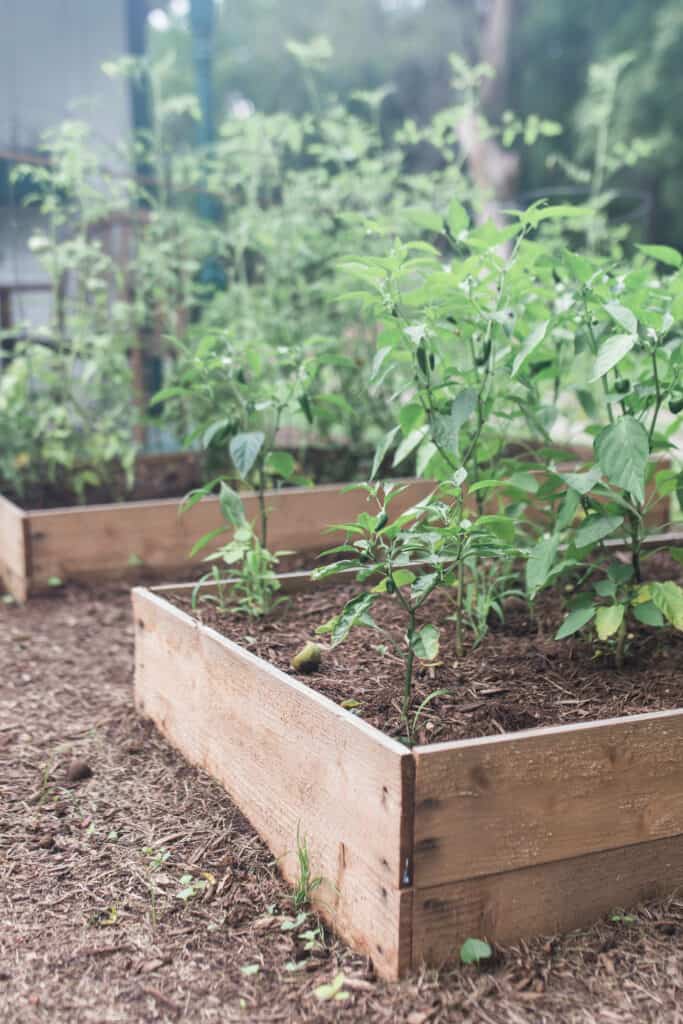
What can you plant in raised garden beds?
You can plant most vegetables, herbs, and flowers in a raised bed. Some ideas include:
- Asparagus
- Tomatoes
- Peppers
- Carrots
- Leafy greens
- Herbs
- Potatoes
- Squashes
- Beans
- Peas
- Broccoli, cauliflower, brussels sprouts.
You can also grow some fruits like strawberries, watermelon, melons, currants, raspberries, blackberries, and even blueberries.
How deep should a raised garden bed be?
A raised bed should be a minimum of 6-12 inches deep. This ensures there is enough room for your plants to develop a good, deep root system, but you can make the raised bed as deep as you would like. If your bed is not 12 inches deep, you could dig out a bit of the ground before adding the dirt to make it deeper.
Materials Needed to Build Raised Garden Beds:
This is for one raised bed. If you are planning to make six beds, then multiply the materials by six.
- 6 – 6 foot pieces of cedar – we used 6-foot long cedar fence posts
- 6 – 10 inch long 1x2s, or 2x4s ripped in half
- Screws
- Circular Saw
- Drill
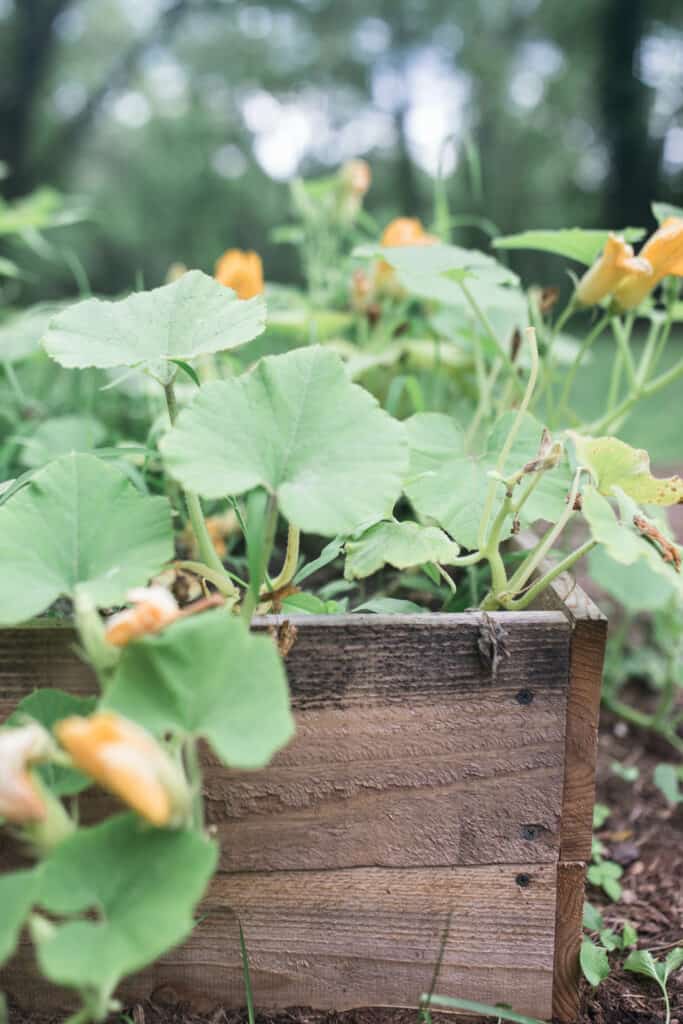
How To Build A Raised Garden Bed Tutorial
- Cut off the top part of the cedar picket fence.
- This isn’t something you have to do; we just decided to square off the top to make it look a little cleaner.
- Measure the cedar fence pickets. Cut 2 boards in half.
- Each post was 6 feet long, so we cut each in half to make two 3-foot boards. These will be the ends of the wood frame for the raised bed.
- Take two of the long pieces of cedar, lay them next to each other, and line up the ends.
- Place one of the 10-inch long 2x4s cut in half (or 1x2s) to one of the ends of the long cedar boards and drill in.
- Stand it up with the cedar board touching the table; the ripped 2×4 is up and part of it is above the cedar.
- Place the short end piece next to the long piece, creating a 90-degree angle, and screw it into the ripped 2×4. Continue doing this until all four boards are attached.
- Add the second layer of cedar posts and screw them into the ripped 2x4s.
- In the center of the long side of the raised bed, screw in another ripped 2×4.
- This helps add support so it doesn’t bow out once the soil is added.
- Put them in place and add soil.
- When installing the raised beds, it is a good idea to allow enough space between each bed to make it comfortable to walk through and bend down.
- When adding the soil, it’s a great idea to add some other free or inexpensive materials before adding the soil. The right materials will be ones that will break down and add nutrients to the soil. This has been called the lasagna method. I like to start by laying cardboard down (this suppresses the weeds). Adding natural materials like sticks, leaves, unsprayed straw, grass clippings, etc, to each of the garden boxes before adding the garden soil will save you money from just filling it with expensive soil. These additions also have rich soil-building benefits and natural drainage built in.
Other Homestead Projects Around The Farmhouse
- How To Build A Chicken Tractor
- How To Build A Picket Fence
- Build A Arbor
- DIY Hearth Pad
- DIY Window Box
How To Build A Raised Garden Bed For Cheap
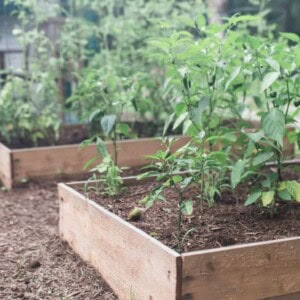
Video
Equipment
- Screws
- Circular Saw
- Drill
Ingredients
- This is for one raised bed. If you are planning to make six beds, then multiply the materials by six.
- 6 6 foot pieces of Cedar – we used 6 foot long cedar fence posts
- 6 10 inch long 1x2s, or 2x4s ripped in half
Instructions
- Cut off the top part of the cedar picket fence. This isn’t something you have to do; we just decided to square off the top to make it look a little cleaner.
- Measure the cedar fence pickets. Cut 2 boards in half. Each post was 6 feet long, so we cut each in half to make two 3-foot boards. These will be the ends of each raised bed.
- Take two of the long pieces of cedar, lay them next to each other, and line up the ends. Place one of the 10 inch long 2x4s cut in half (or 1x2s) to one of the ends of the long cedar boards and drill in. Stand it up with the cedar board touching the table; the ripped 2×4 is up and part of it is above the cedar.
- Place the short end piece next to the long piece creating a 90 degree angle and screw it into the ripped 2×4. Continue doing this until all four boards are attached.
- Add the second layer of cedar posts and screw them into the ripped 2x4s.In the center of the long side of the raised bed, screw in another ripped 2×4. This helps add support so it doesn’t bow out once the soil is added.
- Put them in place and add soil.When installing the raised beds, it is a good idea to allow enough space between each bed to make it comfortable to walk through and bend down.
Notes
Benefits Of Raised Beds
- Kids don’t run on top of the soil (which compacts it), or get into your veggies as much.
- Less weeding than traditional gardens created right in the ground.
- You can fill them with whatever soil you can find. Get good soil and add lots of it!
- Space-saving: you don’t have to garden in rows. The boxes themselves create the rows.
- The square foot garden is a great way to grow a lot of food in a small amount of space.
- It is much easier to get in the garden to harvest and weed because they are raised up.
Nutrition information is automatically calculated, so should only be used as an approximation.
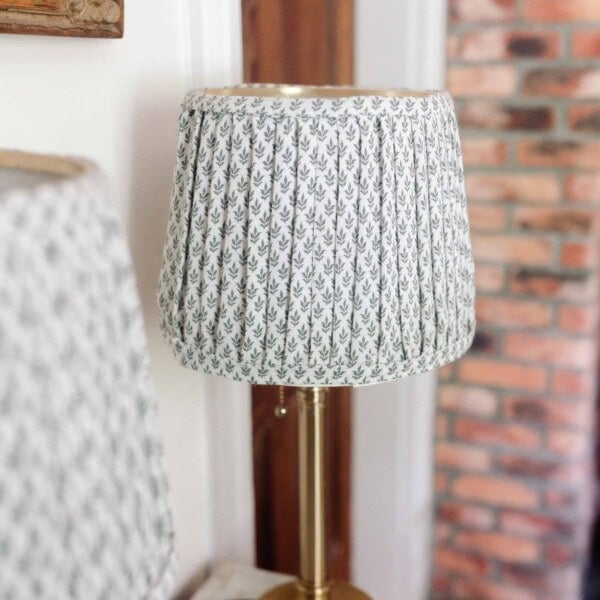
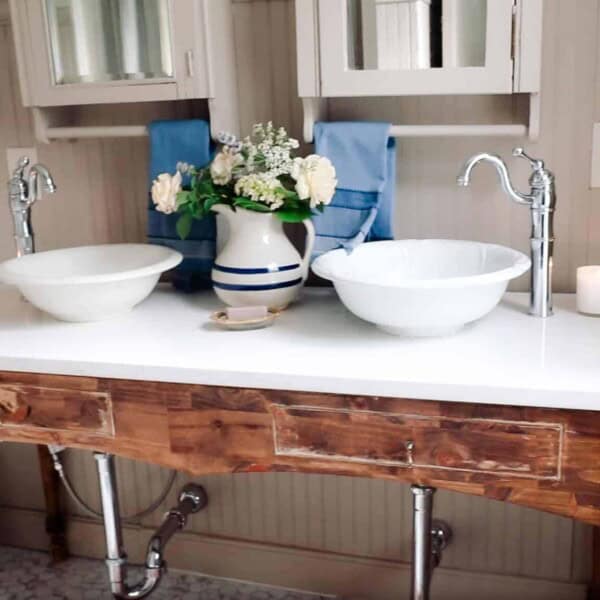
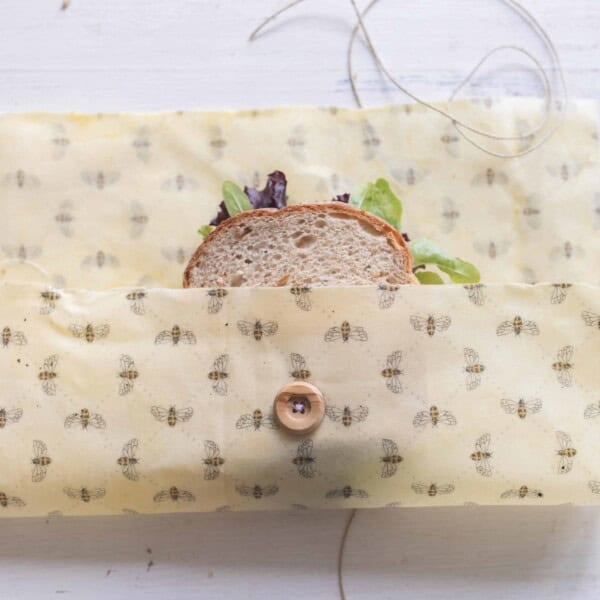
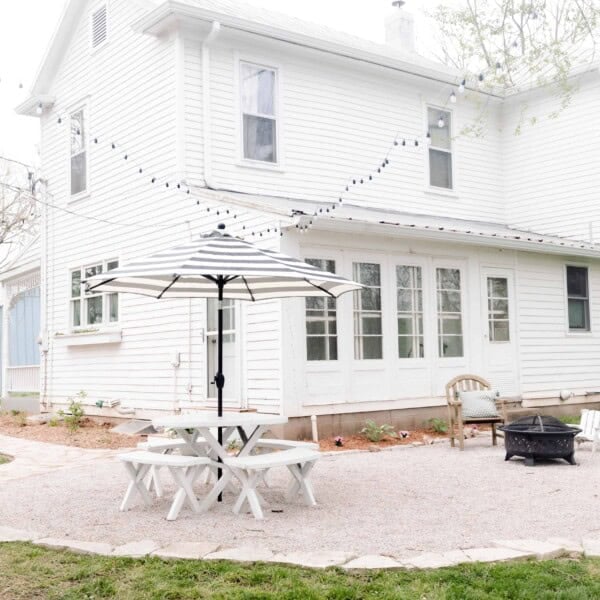






Making mine today! So excited to show off the finished product!
What brand fabric please?
I just use whatever Lowes has on hand!
This is awesome! Thank you so much for providing this article. I’m wondering if you have any recommendations for how to go about finding topsoil to fill these babies up once they’re built? I plan to sheet mulch compost and add in more compost once I empty out my deep litter coops, but I need to get a good topsoil base in the beds first. Is trying to pull soil from other parts of the property a good idea?
Also, for those concerned about lumber prices, Lowe’s still sells the 6ft dog eared cedar posts at $2.98 which makes them $17.88 per bed. Still a great deal! https://www.lowes.com/pd/19-32-X-5-X-6/5014320603
I would call around to local places. They will usually have the best prices.
Hi, was just watching your video, it is very helpful. Just noticed that it looked like there was landscape cloth or plastic under the soil in the video. Was wondering if you did actually use it because I don’t think that you mention it and I don’t see it written in the instructions. Also, do you need to stain the wood?
Krys
We didn’t stain or seal the wood. We used landscaping fabric.
You really should take this article down. The cost of cedar is way out of this world. One post would cost about 15 dollars and cedar side boards about 20 each. Check lumber prices before getting to excited
If you had read the post, you would have seen that I used cedar fence posts and not boards. Which is much more cost effective. They may have gone up in price, but you can still get all the cedar for one bed for $24 that is still a really good deal.
Yes! I built mine from this post in 2020 when lumber prices were awful and mine came to $20 each in Washington State! So thankful for this post!
Oh for heavens sakes.
TOM – Cedar fence pickets in my location in Georgia are still around 4.00 for a 6 ft picket and its 2024 now years after the initial tutorial.So this is still fairly close in pricing to her post. Tom – You must be confusing the pickets with actual cedar lumber boards . I so appreciate this tutorial it has saved me a ton of money using the pickets ! Thank you so much !
Our son was kind enough to cut up some free pallets we had accumulated and made many beds…. That was free. The dirt is a different story. We had some on hand we’d bought last year at the end of the season. We have compost that is going to take some time. It’s a project in motion. Next would be the mulch between all the beds… hmmmm…. I wonder about laying down cardboard boxes and thick flakes of straw and keeping them wet to keep them from blowing away….
Like someone said earlier…. Use her ideas and be creative with what you have or can get😋
Can you please tell me what size wood screws were used to make them. Thank you
I’m so sorry, but I do not remember this at all. We’ve had these raised beds for several years.
Just wondering…how have these raised beds lasted over the last several years since you’ve built this? Do you still use them? And would you have changed anything now, looking back? I’m considering following your technique for a low-cost option for raised beds.
Yep, we are still using them. They have held up great.
This pricing is for the cedar is very off especially with the shortages. I love your site, but this is not a truthful depiction of how much a raised bed is even close to costing, especially not treated.
I cant believe how negative some of these comments are about the price of lumber! This post was made in 2019!!! Of course we all know the price of wood is not going to be the same. That does not make it “untruthful”!!! Lets be grateful that people take the time to post such beautiful detailed directions to stimulate our thinking!
Recently lumber has doubled and sometimes tripled in our area. I knew I should have made those beds when prices were lower. Thanks for a great article!
Great video and exactly as I build my raised garden beds.. Just a couple of questions.. The 2×4’s that you use in the corners and for bracing, they look more like 1×2’s to me?? Not a big deal as I use whatever I have handy. The other comment I have, I was a little surprised to see you putting the soil directly on the pathways between the beds and wondered if there was a reason why you didn’t use newspaper or cardboard as a weed barrier first? I am always looking to upgrade my knowledge and ideas so don’t think I am putting down your methods, I was just wondering if I was missing something. Keep up the great work and thank you again for sharing with us. Sandie from Ontario Canada.
What do you put down to keep weeds from coming up between beds?
We use weed barrier fabric and mulch.